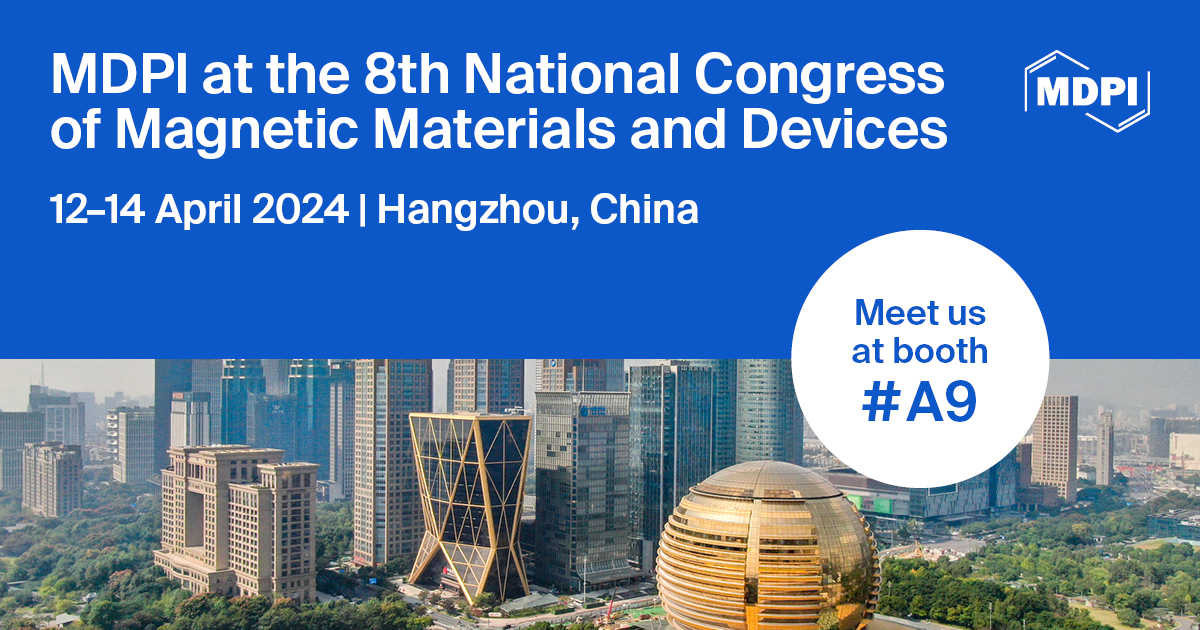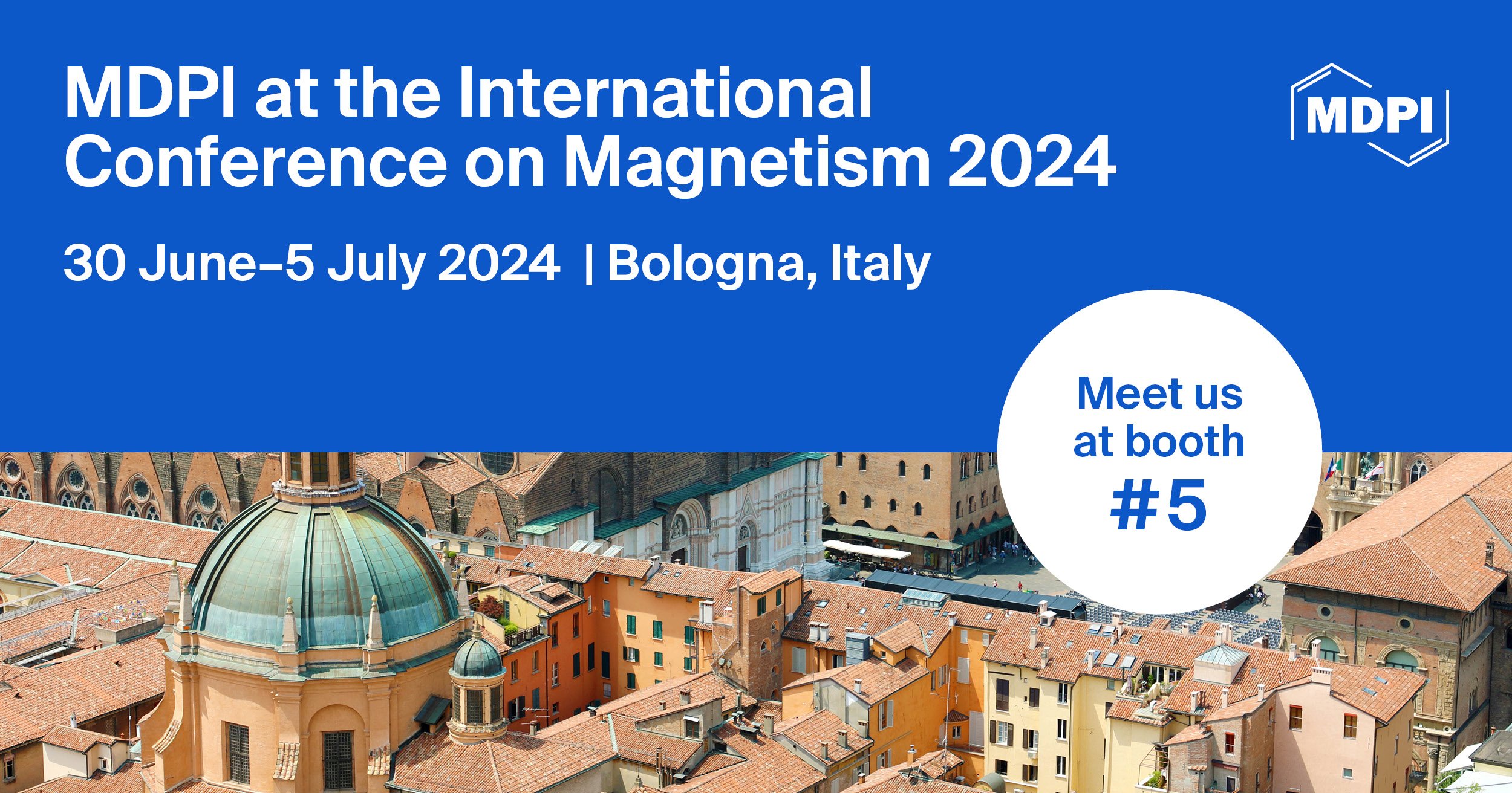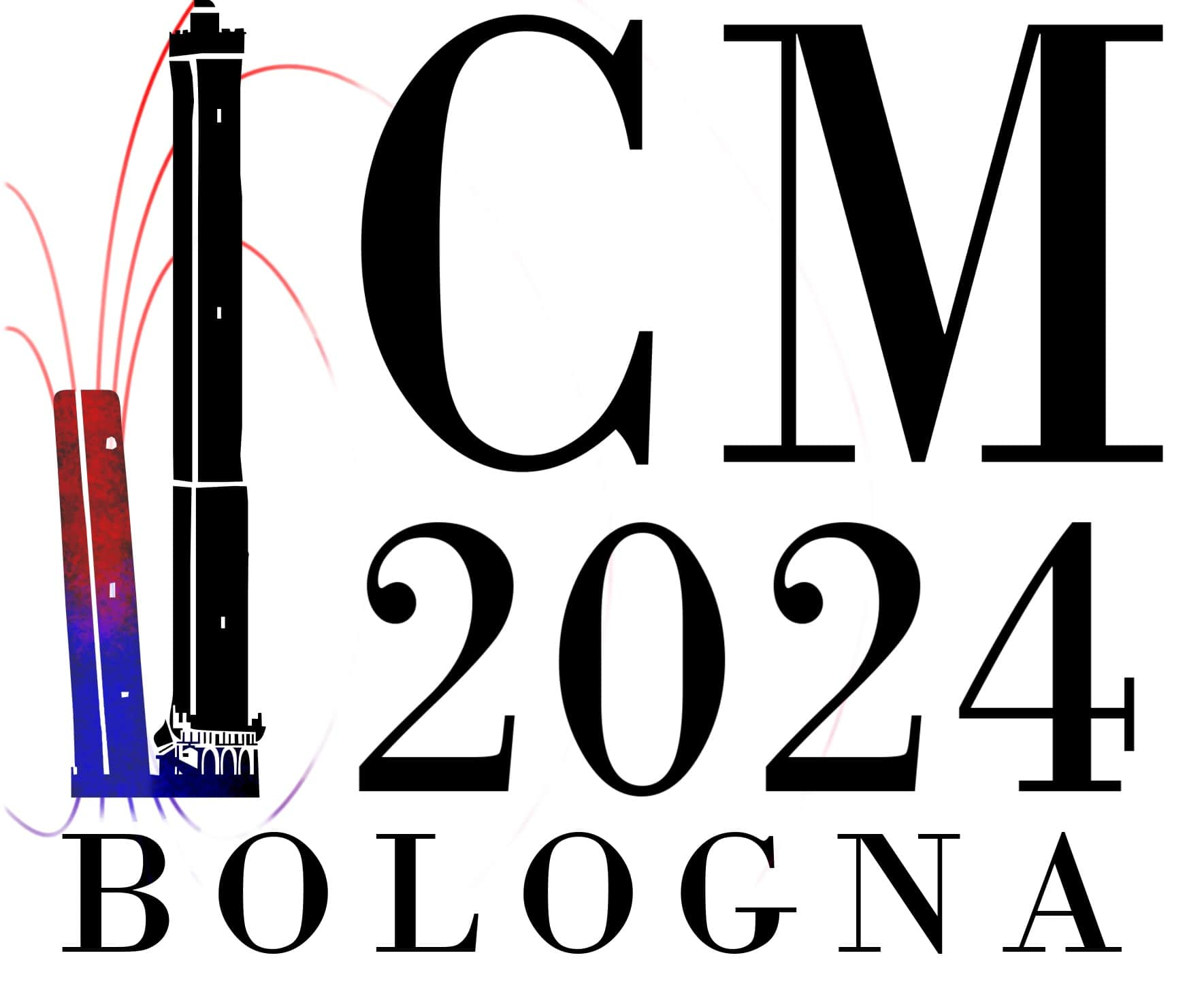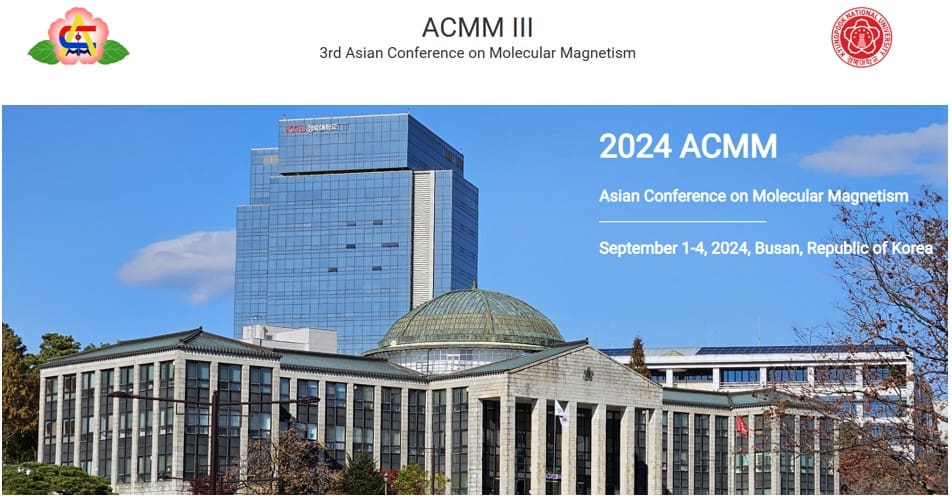-
 Syntheses, Structures, and Properties of Mono- and Dinuclear Acetylacetonato Ruthenium(III) Complexes with Chlorido or Thiocyanato Ligands
Syntheses, Structures, and Properties of Mono- and Dinuclear Acetylacetonato Ruthenium(III) Complexes with Chlorido or Thiocyanato Ligands -
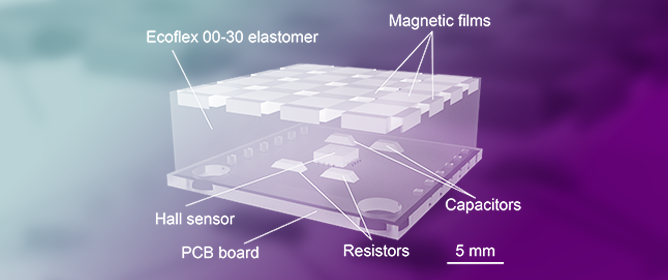 A Magnet Splicing Method for Constructing a Three-Dimensional Self-Decoupled Magnetic Tactile Sensor
A Magnet Splicing Method for Constructing a Three-Dimensional Self-Decoupled Magnetic Tactile Sensor -
 Preparation and Optimization of the Adsorbent for Phosphorus Removal Using the Response Surface Method
Preparation and Optimization of the Adsorbent for Phosphorus Removal Using the Response Surface Method
Journal Description
Magnetochemistry
Magnetochemistry
is an international, peer-reviewed, open access journal on all areas of magnetism and magnetic materials published monthly online by MDPI.
- Open Access— free for readers, with article processing charges (APC) paid by authors or their institutions.
- High Visibility: indexed within Scopus, SCIE (Web of Science), Inspec, CAPlus / SciFinder, and other databases.
- Journal Rank: JCR - Q2 (Chemistry, Inorganic & Nuclear) / CiteScore - Q2 (Chemistry (miscellaneous))
- Rapid Publication: manuscripts are peer-reviewed and a first decision is provided to authors approximately 15.8 days after submission; acceptance to publication is undertaken in 3.5 days (median values for papers published in this journal in the second half of 2023).
- Recognition of Reviewers: reviewers who provide timely, thorough peer-review reports receive vouchers entitling them to a discount on the APC of their next publication in any MDPI journal, in appreciation of the work done.
Impact Factor:
2.7 (2022);
5-Year Impact Factor:
2.5 (2022)
Latest Articles
Relationship between Structure and Zero-Field Splitting of Octahedral Nickel(II) Complexes with a Low-Symmetric Tetradentate Ligand
Magnetochemistry 2024, 10(5), 32; https://doi.org/10.3390/magnetochemistry10050032 - 24 Apr 2024
Abstract
Octahedral nickel(II) complexes are among the simplest systems that exhibit zero-field splitting by having two unpaired electrons. For the purpose of clarifying the relationship between structure and zero-field splitting in a low-symmetric system, distorted octahedral nickel(II) complexes were prepared with a tetradentate ligand,
[...] Read more.
Octahedral nickel(II) complexes are among the simplest systems that exhibit zero-field splitting by having two unpaired electrons. For the purpose of clarifying the relationship between structure and zero-field splitting in a low-symmetric system, distorted octahedral nickel(II) complexes were prepared with a tetradentate ligand, 2-[bis(2-methoxyethyl)aminomethyl]-4-nitrophenolate(1−) [(onp)−]. The complex [Ni(onp)(dmso)(H2O)][BPh4]·2dmso (1) (dmso = dimethyl sulfoxide) was characterized as a bulk sample by IR, elemental analysis, mass spectrometry, electronic spectra, and magnetic properties. The powder electronic spectral data were analyzed based on the angular overlap model to conclude that the spectra were typical of D4-symmetric octahedral coordination geometry with a weak axial ligand field. Simultaneous analysis of the temperature-dependent susceptibility and field-dependent magnetization data yielded the positive axial zero-field splitting parameter D (H = guβSuHu + D[Sz2 − S(S + 1)/3]), which was consistent with the weak axial ligand field. Single-crystal X-ray analysis revealed the crystal structures of [Ni(onp)(dmso)(H2O)][BPh4]·dmso (2) and [Ni(onp)(dmf)2][BPh4] (3) (dmf = N,N-dimethylformamide). The density functional theory (DFT) computations based on the crystal structures indicated the D4-symmetric octahedral coordination geometries with weak axial ligand fields. This study also showed the importance of considering g-anisotropy in magnetic analysis, even if g-anisotropy is small.
Full article
(This article belongs to the Section Molecular Magnetism)
Open AccessArticle
A Novel Magnetic Nano-Adsorbent Functionalized with Green Tea Extract and Magnesium Oxide to Remove Methylene Blue from Aqueous Solutions: Synthesis, Characterization, and Adsorption Behavior
by
Wenchao Lin, Yaoyao Huang, Shuang Liu, Wei Ding, Hong Li and Huaili Zheng
Magnetochemistry 2024, 10(5), 31; https://doi.org/10.3390/magnetochemistry10050031 - 24 Apr 2024
Abstract
In this study, a novel green tea/Mg-functionalized magnetic nano-adsorbent, denoted as GTE-MgO-Fe3O4 NPs, was developed and applied to the extraction of Methylene Blue (MB) from water-based solutions. The GTE-MgO-Fe3O4 NPs were synthesized by incorporating green tea extracts
[...] Read more.
In this study, a novel green tea/Mg-functionalized magnetic nano-adsorbent, denoted as GTE-MgO-Fe3O4 NPs, was developed and applied to the extraction of Methylene Blue (MB) from water-based solutions. The GTE-MgO-Fe3O4 NPs were synthesized by incorporating green tea extracts (GTE) and Mg species onto the surface of Fe3O4 nanoparticles using a hydrothermal method. Characterization analyses corroborated the successful functionalization of the Fe3O4 surface with GTE and Mg species, resulting in a superparamagnetic adsorbent equipped with abundant surface functional groups, which promoted MB adsorption and facilitated magnetic separation. Batch experiments revealed that different operating parameters had an impact on the adsorption behavior, such as adsorbent dosage, pH, coexisting ions, contact time, the initial MB concentration, and temperature. The investigations of adsorption kinetics and isotherms emphasized that the MB adsorption onto GTE-MgO-Fe3O4 NPs was an exothermic process dominated by chemisorption. The experimental adsorption capacity of GTE-MgO-Fe3O4 NPs for MB surpassed 174.93 mg g−1, markedly superior to the performance of numerous other adsorbents. Ultimately, the utilized GTE-MgO-Fe3O4 NPs could be effectively regenerated through acid pickling, retaining over 76% of its original adsorption capacity after six adsorption–desorption cycles, which suggested that GTE-MgO-Fe3O4 NPs was a suitable adsorbent for eliminating MB from effluent.
Full article
(This article belongs to the Special Issue Applications of Magnetic Materials in Water Treatment)
►▼
Show Figures
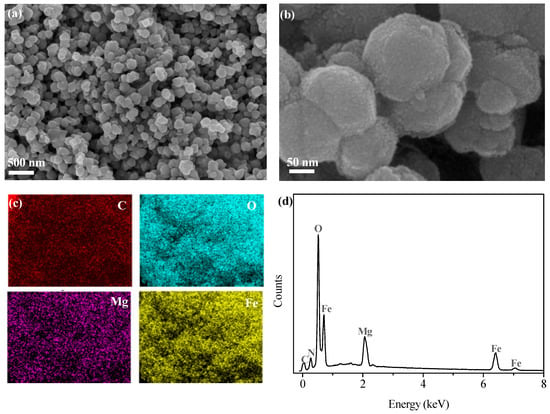
Figure 1
Open AccessArticle
The Piezoresistive Performance of CuMnNi Alloy Thin-Film Pressure Sensors Prepared by Magnetron Sputtering
by
Zhengtao Wu, Xiaotao He, Yu Cao, Qimin Wang, Yisong Lin, Liangliang Lin and Chao Liu
Magnetochemistry 2024, 10(5), 30; https://doi.org/10.3390/magnetochemistry10050030 - 23 Apr 2024
Abstract
►▼
Show Figures
Effects of varying Mn and Ni concentrations on the structure and piezoresistive properties of CuMnNi films deposited by magnetron sputtering with a segmented target were investigated. An increase in the Ni content refines the CuNi film grains, inducing an increase in defects such
[...] Read more.
Effects of varying Mn and Ni concentrations on the structure and piezoresistive properties of CuMnNi films deposited by magnetron sputtering with a segmented target were investigated. An increase in the Ni content refines the CuNi film grains, inducing an increase in defects such as internal micropores and a decrease in film density. At the same time, the positive piezoresistive coefficient of the film changes to negative. When 17.5 at.% Ni was added, the negative piezoresistive coefficient of the CuNi film was −2.0 × 10−4 GPa−1. The doping of Ni has a weakening effect on the positive piezoresistive effect of the film. Adding Mn into Cu refines the film grains while increasing the film density. The surface roughness of the film decreases with the increase in Mn content. When the Mn content was 16.7 at.%, the piezoresistive coefficient reached the largest recorded value of 23.81 × 10−4 GPa−1, and the film exhibited excellent repeatability in multiple piezoresistive tests. After the CuMn film with 16.7 at.% Mn was annealed at 400 °C for 2 h, the film grains grew slightly and the film residual stress decreased. The optimization of the film structure can reduce the scattering of electrons during transportation. The piezoresistive coefficient of the film was further improved to 35.78 × 10−4 GPa−1.
Full article
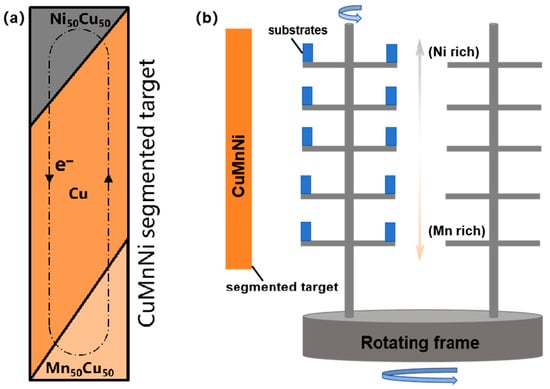
Figure 1
Open AccessArticle
Numerical Analysis of the Influence of a Magnetic Field on the Group Dynamics of Iron-Doped Carbon Nanotori
by
Vladislav I. Borodin, Alexey M. Bubenchikov, Mikhail A. Bubenchikov, Dmitry S. Kaparulin and Vyacheslav A. Ovchinnikov
Magnetochemistry 2024, 10(4), 29; https://doi.org/10.3390/magnetochemistry10040029 - 18 Apr 2024
Abstract
►▼
Show Figures
Columnar phases consisting of a group of carbon toroidal molecules (C120, C192, C252, C288) are studied numerically. Each nanotorus was previously doped with an iron atom. This made it possible to use an external magnetic
[...] Read more.
Columnar phases consisting of a group of carbon toroidal molecules (C120, C192, C252, C288) are studied numerically. Each nanotorus was previously doped with an iron atom. This made it possible to use an external magnetic field as a tool for influencing both an individual molecule and a linear fragment of the columnar phase. A high-precision scheme for calculating the dynamics of large molecules with a rigid frame structure is proposed to solve the problem. The group dynamics of nanotori clusters under the influence of an external magnetic field has been studied using classical molecular dynamics methods. The influence of the molecular cluster size, temperature, magnetic moment of the molecule, and magnetic field direction on the collective behavior of iron-doped toroidal molecules with different contents of carbon atoms is analyzed. Molecular dynamics calculations showed that systems of nanotori doped with a single iron atom retain a columnar structure both in the absence and in the presence of an external magnetic field. The columnar fragment behaves as a stable linear association of molecules even at sufficiently high values of magnetic induction, performing a coordinated collective orbital rotation around a common center of mass on a nanosecond time scale.
Full article
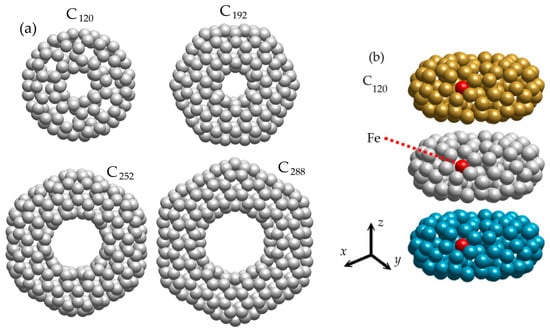
Figure 1
Open AccessReview
Recent Advances in Magnetically Actuated Droplet Manipulation for Biomedical Applications
by
Jiaqi Li, Kaixin Su, Hailan Liu and Yuan Zou
Magnetochemistry 2024, 10(4), 28; https://doi.org/10.3390/magnetochemistry10040028 - 16 Apr 2024
Abstract
►▼
Show Figures
The manipulation of droplets plays a vital role in biomedicine, chemistry, and hydromechanics, especially in microfluidics. Magnetic droplet manipulation has emerged as a prominent and advanced technique in comparison to other modes such as dielectric infiltration, optical radiation, and surface acoustic waves. Its
[...] Read more.
The manipulation of droplets plays a vital role in biomedicine, chemistry, and hydromechanics, especially in microfluidics. Magnetic droplet manipulation has emerged as a prominent and advanced technique in comparison to other modes such as dielectric infiltration, optical radiation, and surface acoustic waves. Its notable progress is attributed to several advantages, including excellent biocompatibility, remote and non-contact control, and instantaneous response. This review provides a comprehensive overview of recent developments in magnetic droplet manipulation and its applications within the biomedical field. Firstly, the discussion involves an examination of the distinctive features associated with droplet manipulation based on both permanent magnet and electromagnet principles, along with a thorough exploration of the influencing factors impacting magnetic droplet manipulation. Additionally, an in-depth review of magnetic actuation mechanisms and various droplet manipulation methods is presented. Furthermore, the article elucidates the biomedical applications of magnetic droplet manipulation, particularly its role in diagnostic assays, drug discovery, and cell culture. Finally, the highlights and challenges of magnetic droplet manipulation in biomedical applications are described in detail.
Full article
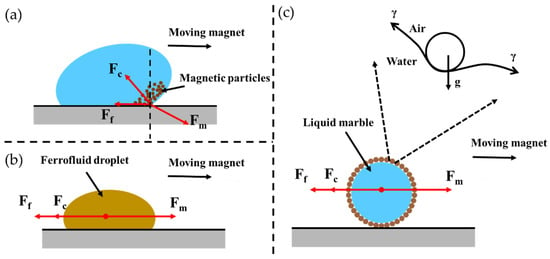
Figure 1
Open AccessCorrection
Correction: Gautam et al. Experimental Thermal Conductivity Studies of Agar-Based Aqueous Suspensions with Lignin Magnetic Nanocomposites. Magnetochemistry 2024, 10, 12
by
Bishal Gautam, Saja M. Nabat Al-Ajrash, Mohammad Jahid Hasan, Abhishek Saini, Sarah J. Watzman, Esteban Ureña-Benavides and Erick S. Vasquez-Guardado
Magnetochemistry 2024, 10(4), 27; https://doi.org/10.3390/magnetochemistry10040027 - 15 Apr 2024
Abstract
►▼
Show Figures
In the original publication [...]
Full article
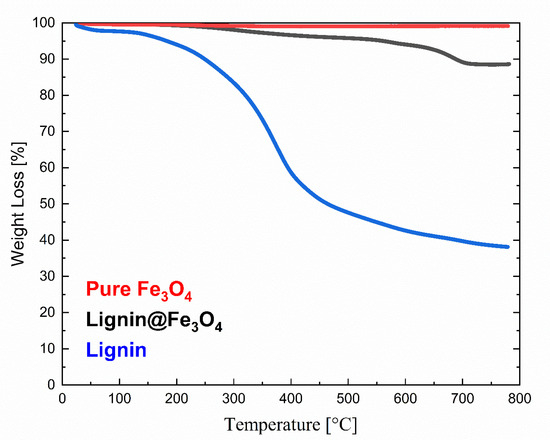
Figure 5
Open AccessComment
Comment on Vishalakshi et al. MHD Hybrid Nanofluid Flow over a Stretching/Shrinking Sheet with Skin Friction: Effects of Radiation and Mass Transpiration. Magnetochemistry 2023, 9, 118
by
Asterios Pantokratoras
Magnetochemistry 2024, 10(4), 26; https://doi.org/10.3390/magnetochemistry10040026 - 11 Apr 2024
Abstract
In Figure 1, in [...]
Full article
(This article belongs to the Special Issue Synthetic, Natural and Natural-Synthetic Hybrid Magnetic Structures: Technology and Application)
Open AccessFeature PaperArticle
Theory of Chiral Electrodeposition by Micro-Nano-Vortexes under a Vertical Magnetic Field-2: Chiral Three-Dimensional (3D) Nucleation by Nano-Vortexes
by
Ryoichi Morimoto, Miki Miura, Atsushi Sugiyama, Makoto Miura, Yoshinobu Oshikiri, Iwao Mogi, Yusuke Yamauchi and Ryoichi Aogaki
Magnetochemistry 2024, 10(4), 25; https://doi.org/10.3390/magnetochemistry10040025 - 31 Mar 2024
Abstract
The contributions of magnetohydrodynamic (MHD) vortexes to chiral electrodeposition in a vertical magnetic field were theoretically examined based on the three-generation model of the 2D nucleus, 3D nucleus, and screw dislocation; for the vortexes to rotate in the second and third-generation, the kinematic
[...] Read more.
The contributions of magnetohydrodynamic (MHD) vortexes to chiral electrodeposition in a vertical magnetic field were theoretically examined based on the three-generation model of the 2D nucleus, 3D nucleus, and screw dislocation; for the vortexes to rotate in the second and third-generation, the kinematic viscosity must be at least 10−18 and 10−30 times lower than the ordinary value in the first generation, i.e., almost equal to zero. This implies that the ionic vacancy created on the electrode surface works as an atomic-scale lubricant. At the same time, the vortexes played three roles: promotion and suppression of nucleation, and transport of the chirality from the upper generation to the lower generation through precessional motion. Then, the rule of the chirality transfer was established, and finally, the relationship between the chiral activity and magnetic field was clarified in the presence and absence of chloride ions.
Full article
(This article belongs to the Special Issue Magnetohydrodynamic Effect in Electrochemical Processes: Magnetoelectrodeposition, Magnetoelectrocatalysis, and Related Studies)
►▼
Show Figures
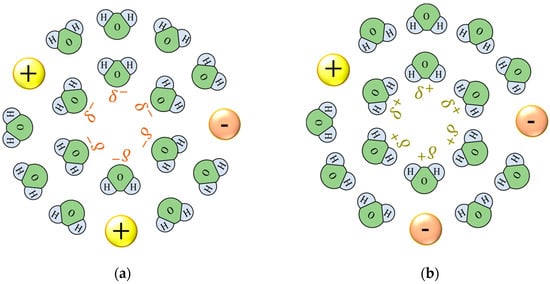
Figure 1
Open AccessArticle
Ni@C/PPy Composites Derived from Ni-MOF Materials for Efficient Microwave Absorption
by
Yu Ma, Yupeng Zou, Lingsai Meng, Lijuan Cai, Shengxiang Xiong, Gang Chen, Chengjun Dong and Hongtao Guan
Magnetochemistry 2024, 10(4), 24; https://doi.org/10.3390/magnetochemistry10040024 - 30 Mar 2024
Abstract
Ni-MOF, as a metal–organic framework, has the advantages of morphological diversity and adjustable composition, which make its derivatives attractive for electromagnetic wave absorption. However, it is challenging for Ni-MOF derivatives to obtain strong absorption at low filling rates. Herein, ternary Ni@C/PPy composites based
[...] Read more.
Ni-MOF, as a metal–organic framework, has the advantages of morphological diversity and adjustable composition, which make its derivatives attractive for electromagnetic wave absorption. However, it is challenging for Ni-MOF derivatives to obtain strong absorption at low filling rates. Herein, ternary Ni@C/PPy composites based on Ni-MOF derivatives were synthesized by cooperatively coupling magnetic Ni@C nanoparticles with a conductive polymer PPy matrix through a facile self-assembly method. Among them, Ni@C nanoparticles are formed after Ni-MOF pyrolysis, and PPy serves as the backbone to effectively assemble and support the Ni@C nanoparticles. As a result, the Ni@C/PPy-3 sample exhibited excellent performance with a reflection loss value of −50.65 dB at a filling ratio of 15 wt% and a thickness of 2.5 mm. At the same time, its effective absorption bandwidth reached 6.24 GHz, covering the whole Ku frequency band. The results show that in comparison to pure Ni@C composite, the Ni@C/PPy multi-component composite with a porous structure shows significant advantages in terms of optimizing impedance matching, which can effectively enhance the interface polarization and, thus, greatly improve its electromagnetic absorption ability. In summary, this work provides a valuable research idea for developing strong absorbing properties of absorbing materials at a low filling rate.
Full article
(This article belongs to the Special Issue Magnetochemistry in China)
►▼
Show Figures
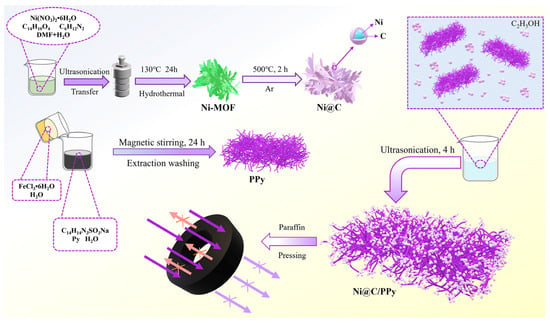
Figure 1
Open AccessArticle
Investigating the Effect of Carbonyl Iron Powder Doping on the Microstructure and Magnetic Properties of Soft Magnetic Composites
by
Yang Liu, Rui Wang, Kaixuan Li, Ran Chen, Zhaoyang Wu and Yang Li
Magnetochemistry 2024, 10(4), 23; https://doi.org/10.3390/magnetochemistry10040023 - 30 Mar 2024
Abstract
This study proposes the thermal decomposition of salt compounds and doping of carbonyl iron powders (CIPs) to optimize the preparation of an insulating layer through the solid-phase interface reaction. First, (Fe–Si–Cr + CIPs)/ZnSO4 composite powders were synthesized using the hydrothermal method and
[...] Read more.
This study proposes the thermal decomposition of salt compounds and doping of carbonyl iron powders (CIPs) to optimize the preparation of an insulating layer through the solid-phase interface reaction. First, (Fe–Si–Cr + CIPs)/ZnSO4 composite powders were synthesized using the hydrothermal method and (Fe–Si–Cr + CIPs)/ZnO·SiO2·Cr2O3 SMCs with a ZnO·SiO2·Cr2O3 composite insulation layer were prepared through heat treatment and cold pressing. The effect of the CIP doping content on the microstructure and magnetic properties of the (Fe–Si–Cr + CIPs)/ZnO·SiO2·Cr2O3 SMCs were then investigated. During the heat treatment, ZnSO4 decomposed into solid ZnO and gaseous SO2 and O2. The O2 drives the solid-phase reaction, prompting the migration of nonmagnetic Si and Cr atoms from the interior of the Fe–Si–Cr soft magnetic powder to the surface insulation layer, finally forming the ZnO·SiO2·Cr2O3 insulation layer. The doped CIPs also show good plasticity during the coating process, combining with the coating layer to fill the internal pores of SMCs. Moreover, as the particles are small with a high surface area, they increase the number of reaction sites for ZnSO4 decomposition and facilitate the growth of the composite insulation layer, promoting its uniform distribution on the surfaces of the soft magnetic powders and CIPs. The lattice mismatch between the insulation layer and soft magnetic powder is reduced while the magnetic-phase content is increased, allowing the effective doping of CIPs sin the insulation layer. The magnetic properties of SMCs can be precisely regulated by changing the doping amount of CIPs. Unlike other insulating layer–preparation strategies based on the interfacial solid-phase reaction, the proposed method exploits the high plasticity and specific surface area of CIPs and removes the lattice mismatch between the insulation layer and soft magnetic powder.
Full article
(This article belongs to the Special Issue Advances in Soft Magnetic Materials)
►▼
Show Figures
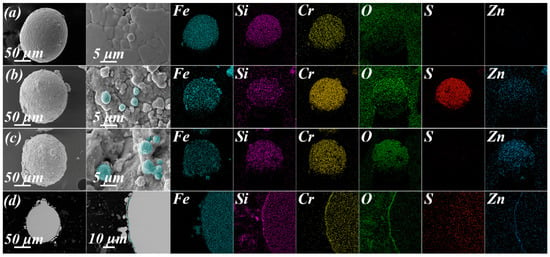
Figure 1
Open AccessArticle
Evidence of a Large Refrigerant Capacity in Nb-Modified La1.4Sr1.6Mn2−xNbxO7 (0.0 ≤ x ≤ 0.15) Layered Perovskites
by
Akshay Kumar, Jong Woo Kim, Mohit K. Sharma, Kavita Kumari, Ankush Vij and Bon Heun Koo
Magnetochemistry 2024, 10(4), 22; https://doi.org/10.3390/magnetochemistry10040022 - 29 Mar 2024
Abstract
In this work, evidence of isothermal magnetic entropy change (
In this work, evidence of isothermal magnetic entropy change (
(This article belongs to the Section Magnetic Materials)
►▼
Show Figures
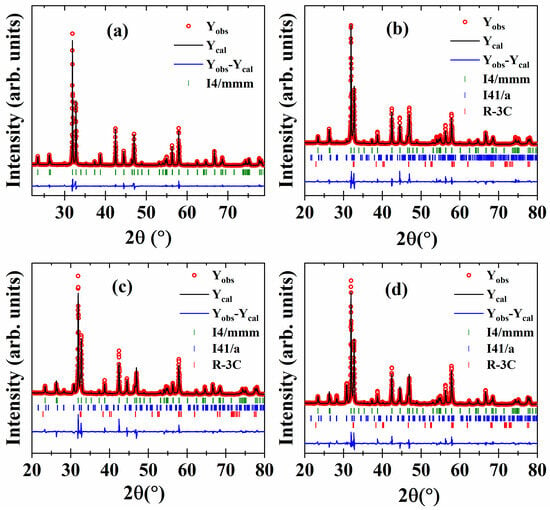
Figure 1
Open AccessArticle
A Novel Two-Stage 3D-Printed Halbach Array-Based Device for Magneto-Mechanical Applications
by
Antonios Makridis, Nikolaos Maniotis, Dimitrios Papadopoulos, Pavlos Kyriazopoulos and Makis Angelakeris
Magnetochemistry 2024, 10(4), 21; https://doi.org/10.3390/magnetochemistry10040021 - 29 Mar 2024
Abstract
This research unveils a versatile Halbach array magnetic device with promising biomedical applications, offering innovative solutions for targeted therapy and disease management in evolving biomedical engineering. This paper explores the potential of a novel Halbach array-based device for harnessing magneto-mechanical phenomena in biomedical
[...] Read more.
This research unveils a versatile Halbach array magnetic device with promising biomedical applications, offering innovative solutions for targeted therapy and disease management in evolving biomedical engineering. This paper explores the potential of a novel Halbach array-based device for harnessing magneto-mechanical phenomena in biomedical applications. The study employs computational modeling using COMSOL Multiphysics to define the device’s magnetic properties and validate its operation within the theoretical prediction. The research catalogs the device’s operational modes and assesses crucial parameters related to magneto-mechanical biomedical modalities, including magnetic field strength, gradient, and force. Experimental validation of numerical findings through magnetic field measurements confirms the device’s multifaceted potential, particularly in targeted drug delivery and tissue engineering applications. Finally, the adaptability of the magnetic arrangements for various scenarios is also highlighted. This investigation provides valuable insights into integrating magneto-mechanical principles into biomedical engineering. It paves the way for further research and innovative approaches in theranostics, positioning the presented apparatus as a promising tool with untapped potential for future exploration and discovery in the evolving biomedical field.
Full article
(This article belongs to the Special Issue Magnetism: Energy, Recycling, Novel Materials)
►▼
Show Figures
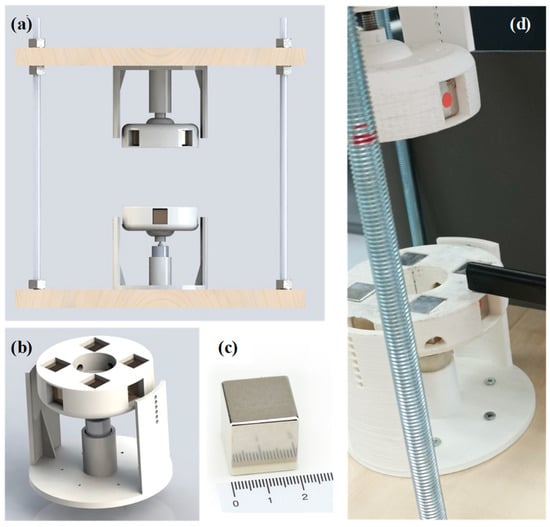
Figure 1
Open AccessArticle
Exploring Dielectric and Magnetic Properties of Ni and Co Ferrites through Biopolymer Composite Films
by
Júlio C. Góes, Sónia D. Figueiró, Karlo David A. Sabóia, Yana Luck Nunes, António César H. Barreto, Pierre Basílio Almeida Fechine, Susana Devesa, António Sérgio Bezerra Sombra, Manuel A. Valente, Sílvia Rodrigues Gavinho and Manuel Pedro Fernandes Graça
Magnetochemistry 2024, 10(4), 20; https://doi.org/10.3390/magnetochemistry10040020 - 29 Mar 2024
Abstract
►▼
Show Figures
This study explores the synthesis and characterization of chitosan/gelatine films incorporating nickel ferrite (NiFe2O4) and cobalt ferrite (CoFe2O4) nanoparticles. The magnetic nanoparticles exhibit superparamagnetic behaviour, making them attractive for various applications, including biomedical uses. The
[...] Read more.
This study explores the synthesis and characterization of chitosan/gelatine films incorporating nickel ferrite (NiFe2O4) and cobalt ferrite (CoFe2O4) nanoparticles. The magnetic nanoparticles exhibit superparamagnetic behaviour, making them attractive for various applications, including biomedical uses. The X-ray diffraction analysis confirmed the successful synthesis of NiFe2O4 and CoFe2O4 nanoparticles, and the scanning electron micrographs illustrated well-dispersed ferrite nanoparticles within the biopolymer network, despite the formation of some aggregates attributed to magnetic interactions. Magnetization loops revealed lower saturation magnetization values for the composites, attributed to the chitosan/gelatine coating and the dielectric studies, indicating increased dielectric losses in the presence of ferrites, particularly pronounced in the case of NiFe2O4, suggesting interactions at the interface region between the polymer and ferrite particles. The AC conductivity shows almost linear frequency dependence, associated with proton polarization and conduction processes, more significant at higher temperatures for samples with ferrite particles.
Full article
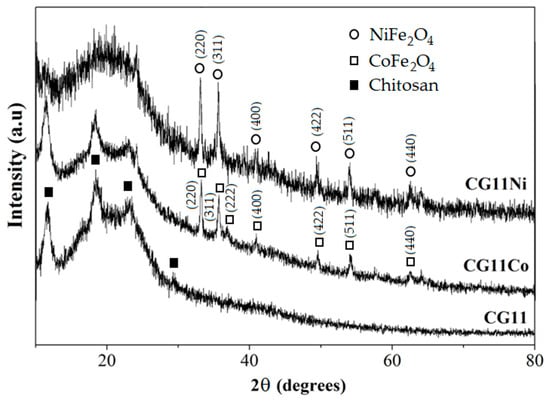
Figure 1
Open AccessArticle
Doping Effects on the Multiferroic Properties of KNbO3 Nanoparticles
by
A. T. Apostolov, I. N. Apostolova and J. M. Wesselinowa
Magnetochemistry 2024, 10(3), 19; https://doi.org/10.3390/magnetochemistry10030019 - 07 Mar 2024
Abstract
The magnetization, polarization, and band-gap energy in pure and ion-doped
The magnetization, polarization, and band-gap energy in pure and ion-doped
(This article belongs to the Special Issue Magnetic Materials, Thin Films and Nanostructures (Volume II))
►▼
Show Figures

Figure 1
Open AccessArticle
The Influence of Current Magnitudes and Profiles on the Sedimentation of Magnetorheological Fluids: An Experimental Work
by
Elliza Tri Maharani, Myeong-Won Seo, Jung Woo Sohn, Jong-Seok Oh and Seung-Bok Choi
Magnetochemistry 2024, 10(3), 18; https://doi.org/10.3390/magnetochemistry10030018 - 07 Mar 2024
Abstract
►▼
Show Figures
Magnetorheological fluids (MRFs) are widely used for various kinds of controllable devices since their properties can be controlled by an external magnetic field. Despite many benefits of MRFs, such as fast response time, the sedimentation arisen due to the density mismatch of the
[...] Read more.
Magnetorheological fluids (MRFs) are widely used for various kinds of controllable devices since their properties can be controlled by an external magnetic field. Despite many benefits of MRFs, such as fast response time, the sedimentation arisen due to the density mismatch of the compositions between iron particles and carrier oil is still one of bottlenecks to be resolved. Many studies on the sedimentation problem of MR fluids have been carried out considering appropriate additives, nanoparticles, and several carrier oils with different densities. However, a study on the effect of current magnitudes and profiles on the sedimentation is considerably rare. Therefore, this study experimentally investigates sedimentation behaviors due to different current magnitudes and different magnitude profiles such as square and sine waves in different diameters. The evaluation was performed by visual observation to obtain the sedimentation rate. It was found that the average sedimentation rate of the square type of current is slower compared to the sinusoidal type. It has also been identified that the higher intensity of the applied current results in a stronger electromagnetic field, which could slow down the sedimentation. The results achieved in this work can be effectively used to reduce particle sedimentation in the controller design of various application systems utilizing MRFs in which the controller generates a different magnitude and different profile of the external magnetic field.
Full article

Figure 1
Open AccessArticle
Advances in Engine Efficiency: Nanomaterials, Surface Engineering, and Quantum-Based Propulsion
by
Mario J. Pinheiro
Magnetochemistry 2024, 10(3), 17; https://doi.org/10.3390/magnetochemistry10030017 - 27 Feb 2024
Abstract
This study explores ground-breaking methods for improving engine efficiency by combining cutting-edge materials, theoretical frameworks, and alternative energy paradigms. The paper primarily offers a cohesive framework, built from our variational method which combines thermal and entropic engines. We investigate the fabrication of hydrophobic
[...] Read more.
This study explores ground-breaking methods for improving engine efficiency by combining cutting-edge materials, theoretical frameworks, and alternative energy paradigms. The paper primarily offers a cohesive framework, built from our variational method which combines thermal and entropic engines. We investigate the fabrication of hydrophobic and other functionally specific surfaces using nanomaterials and sophisticated surface engineering techniques that efficiently utilize entropy gradient forces. Additionally, this publication explores the fields of quantum-based propulsion systems and information-burning engines, creating a connecting link between theoretical foundations and real-world technical implementations. The study emphasizes the multifaceted character of engine research and its crucial role in shaping a future in which sustainability and efficiency are intimately connected.
Full article
(This article belongs to the Section Applications of Magnetism and Magnetic Materials)
►▼
Show Figures
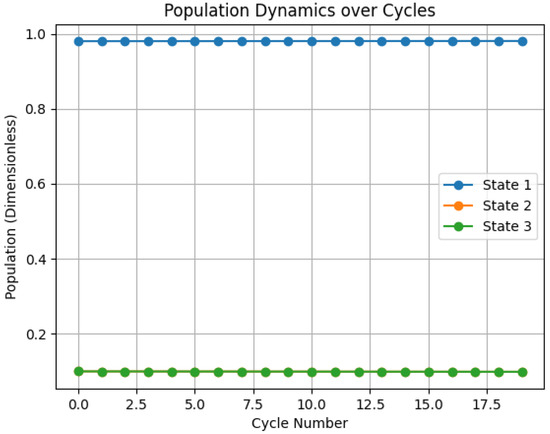
Figure 1
Open AccessArticle
Syntheses, Structures, and Properties of Mono- and Dinuclear Acetylacetonato Ruthenium(III) Complexes with Chlorido or Thiocyanato Ligands
by
Kai Nakashima, Chihiro Hayami, Shino Nakashima, Haruo Akashi, Masahiro Mikuriya and Makoto Handa
Magnetochemistry 2024, 10(3), 16; https://doi.org/10.3390/magnetochemistry10030016 - 27 Feb 2024
Abstract
The mononuclear and dinuclear ruthenium(III) complexes trans-Ph4P[RuIII(acac)2Cl2] (1), Ph4P[{RuIII(acac)Cl}2(μ-Cl)3] (2) and trans-Ph4P[RuIII(acac)2(NCS)2
[...] Read more.
The mononuclear and dinuclear ruthenium(III) complexes trans-Ph4P[RuIII(acac)2Cl2] (1), Ph4P[{RuIII(acac)Cl}2(μ-Cl)3] (2) and trans-Ph4P[RuIII(acac)2(NCS)2]·0.5C6H14 (3·0.5C6H14) were synthesized. Single crystals of 1, 2·H2O and 3·CH3CN suitable for X-ray crystal structure analyses were obtained through recrystallization from DMF for 1 and 2·H2O and from acetonitrile for 3·CH3CN. An octahedral Ru with bis-chelate-acac ligands and axial chlorido or κ-N-thiocyanido ligands (for 1 and 3·CH3CN) and triply µ-chlorido-bridged dinuclear Ru2 for 2·H2O were confirmed through the structure analyses. The Ru–Ru distance of 2.6661(2) of 2·H2O is indicative of the existence of the direct metal–metal interaction. The room temperature magnetic moments (μeff) are 2.00 and 1.93 μB for 1 and 3·0.5C6H14, respectively, and 0.66 μB for 2. The temperature-dependent (2–300 K) magnetic susceptibility showed that the strong antiferromagnetic interaction (J ≤ −800 cm−1) is operative between the ruthenium(III) ions within the dinuclear core. In the 1H NMR spectra measured in CDCl3 at 298 K, the dinuclear complex 2 showed signals for the acac ligand protons at 2.50 and 2.39 ppm (for CH3) and 5.93 ppm (for CH), respectively, while 1 and 3·0.5C6H14 showed signals with large paramagnetic shifts; −17.59 ppm (for CH3) and −57.01 ppm (for CH) for 1 and −16.89 and −17.36 ppm (for CH3) and −53.67 and −55.53 ppm (for CH) for 3·0.5C6H14. Cyclic voltammograms in CH2Cl2 with an electrolyte of nBu4N(ClO4) showed the RuIII → RuIV redox wave at 0.23 V (vs. Fc/Fc+) for 1 and the RuIII → RuII waves at −1.39 V for 1 and −1.25 V for 3·0.5C6H14 and the RuIII–RuIII → RuIII–RuIV and RuIII–RuIII → RuIII–RuIV waves at 0.91 V and −0.79 V for 2.
Full article
(This article belongs to the Section Molecular Magnetism)
►▼
Show Figures

Graphical abstract
Open AccessEditor’s ChoiceArticle
High-Strength Copper/Silver Alloys Processed by Cold Spraying for DC and Pulsed High Magnetic Fields
by
Simon Tardieu, Hanane Idrir, Christophe Verdy, Olivier Jay, Nelson Ferreira, François Debray, Anne Joulain, Christophe Tromas, Ludovic Thilly and Florence Lecouturier-Dupouy
Magnetochemistry 2024, 10(3), 15; https://doi.org/10.3390/magnetochemistry10030015 - 21 Feb 2024
Abstract
High-strength, high-conductivity copper/silver-alloyed materials were prepared by cold-spray (CS) manufacturing. For DC high-field application at room temperature, bulk Cu/Ag (5% vol. Ag) alloys with high mechanical properties and high electrical conductivity can be obtained by CS and post-heat treatments. For pulsed-field application at
[...] Read more.
High-strength, high-conductivity copper/silver-alloyed materials were prepared by cold-spray (CS) manufacturing. For DC high-field application at room temperature, bulk Cu/Ag (5% vol. Ag) alloys with high mechanical properties and high electrical conductivity can be obtained by CS and post-heat treatments. For pulsed-field application at liquid nitrogen temperature, bulk Cu/Ag (5% vol. Ag) alloys serve as precursors for room-temperature wire drawing. The Cu/Ag-alloyed bulk CS deposit presents a high yield strength of about 510 MPa with a corresponding electrical resistivity of 1.92 µΩ·cm (at 293 K). The Cu/Ag-alloyed wires show a very high ultimate tensile strength (1660 MPa at 77 K or 1370 MPa at 293 K) and low electrical resistivity (1.05 µΩ·cm at 77 K or 2.56 µΩ·cm at 293 K). Microstructural studies via STEM allow us to understand this very high level of mechanical strength. The results evidence that materials developed by CS exhibit very high mechanical properties compared to materials prepared by other routes, due to the high velocity of the deposited particles, which leads to high initial deformation rates and specific microstructural features.
Full article
(This article belongs to the Special Issue Feature Papers in Materials for High Field Resistive Magnets)
►▼
Show Figures

Figure 1
Open AccessArticle
Nano-Magnonic Crystals by Periodic Modulation of Magnetic Parameters
by
Alison Roxburgh and Ezio Iacocca
Magnetochemistry 2024, 10(3), 14; https://doi.org/10.3390/magnetochemistry10030014 - 21 Feb 2024
Abstract
Magnonic crystals are metamaterials whose magnon behavior can be controlled for specific applications. To date, most magnonic crystals have relied on nanopatterning and magnetostatic waves. Here, we analytically and numerically investigate magnonic crystals defined by modulating magnetic parameters at the nanoscale, which predominantly
[...] Read more.
Magnonic crystals are metamaterials whose magnon behavior can be controlled for specific applications. To date, most magnonic crystals have relied on nanopatterning and magnetostatic waves. Here, we analytically and numerically investigate magnonic crystals defined by modulating magnetic parameters at the nanoscale, which predominantly act on exchange-dominated, sub-100 nm magnons. We focus on two cases: the variation in the exchange constant, and the DMI constant. We found that the exchange constant modulation gives rise to modest band gaps in the forward volume wave and surface wave configurations. The modulation of the DMI constant was found to have little effect on the magnonic band structure, leading instead to a behavior expected for unpatterned thin films. We believe that our results will be interesting for future experimental investigations of nano-designed magnonic crystals and magnonic devices, where material parameters can be locally controlled, e.g., by thermal nano-lithography.
Full article
(This article belongs to the Special Issue Spin Waves in Magnonic Crystals and Hybrid Ferromagnetic Structures)
►▼
Show Figures

Figure 1
Open AccessArticle
Compatibility of LaFe13−x−yMnxSiyH1.6 and Eutectic Liquid GaInSn Alloy
by
Jamieson Brechtl, Joseph Rendall, Mingkan Zhang, Michael R. Koehler, Kashif Nawaz and Ayyoub M. Momen
Magnetochemistry 2024, 10(2), 13; https://doi.org/10.3390/magnetochemistry10020013 - 12 Feb 2024
Abstract
The heat transfer rate of magnetocaloric regenerators is a topic of extensive research and the cyclability of these regenerators is critical to the operation of systems with a high coefficient of performance (e.g., potentially >22, significantly higher than typical vapor compression cooling technologies).
[...] Read more.
The heat transfer rate of magnetocaloric regenerators is a topic of extensive research and the cyclability of these regenerators is critical to the operation of systems with a high coefficient of performance (e.g., potentially >22, significantly higher than typical vapor compression cooling technologies). To enable a high operating frequency that will result in a high specific cooling power, the heat transfer fluid should have high thermal conductivity and lower specific heat, i.e., higher thermal diffusivity. Eutectic metal alloys possess these qualities, such as gallium–indium–tin (Galinstan), whose thermal diffusivity has been found to be approximately an order of magnitude higher than water. For this study, the effects of eutectic liquid Galinstan exposure on the phase stability of LaFe13−x−yMnxSiyH1.6 magnetocaloric powders in an active magnetic regenerator device were investigated. The powders were characterized before and after exposure to Galinstan using X-ray diffraction, in which the phases were determined using the Rietveld refinement technique and X-ray fluorescence. It was found that after Galinstan exposure, hydrogen containing phases were present in the powder, suggesting that the hydrogen was lost from the magnetocaloric phase. The magnetocaloric phase degradation indicates that the powder was incompatible with the Galinstan metal in an environment with moisture.
Full article
(This article belongs to the Special Issue Advances in Functional Materials with Tunable Magnetic Properties)
►▼
Show Figures
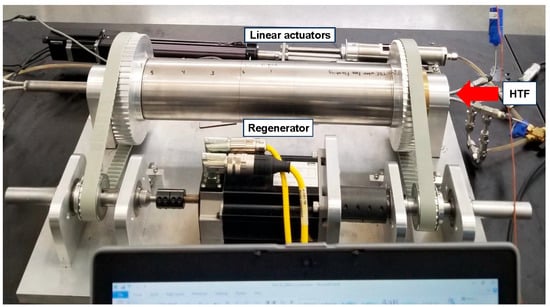
Figure 1

Journal Menu
► ▼ Journal Menu-
- Magnetochemistry Home
- Aims & Scope
- Editorial Board
- Reviewer Board
- Topical Advisory Panel
- Instructions for Authors
- Special Issues
- Topics
- Sections
- Article Processing Charge
- Indexing & Archiving
- Editor’s Choice Articles
- Most Cited & Viewed
- Journal Statistics
- Journal History
- Journal Awards
- Conferences
- Editorial Office
Journal Browser
► ▼ Journal BrowserHighly Accessed Articles
Latest Books
E-Mail Alert
News
Topics

Conferences
Special Issues
Special Issue in
Magnetochemistry
Application of Electric Fields in Controling the Properties of Ferromagnetic Materials
Guest Editors: Matteo Cialone, Marine Schott, Federico CaglierisDeadline: 20 May 2024
Special Issue in
Magnetochemistry
Current Trends in Magnetic Metallic Materials and Nanocomposites
Guest Editors: Haitao Jiao, Yuanxiang ZhangDeadline: 31 May 2024
Special Issue in
Magnetochemistry
Spin and Charge Transport in Novel Quantum and Topological Materials
Guest Editors: Xuan Gao, Shulei ZhangDeadline: 20 June 2024
Special Issue in
Magnetochemistry
Muon Diffusion in Layered Materials: Experiment and Modeling
Guest Editor: Chennan WangDeadline: 30 June 2024




